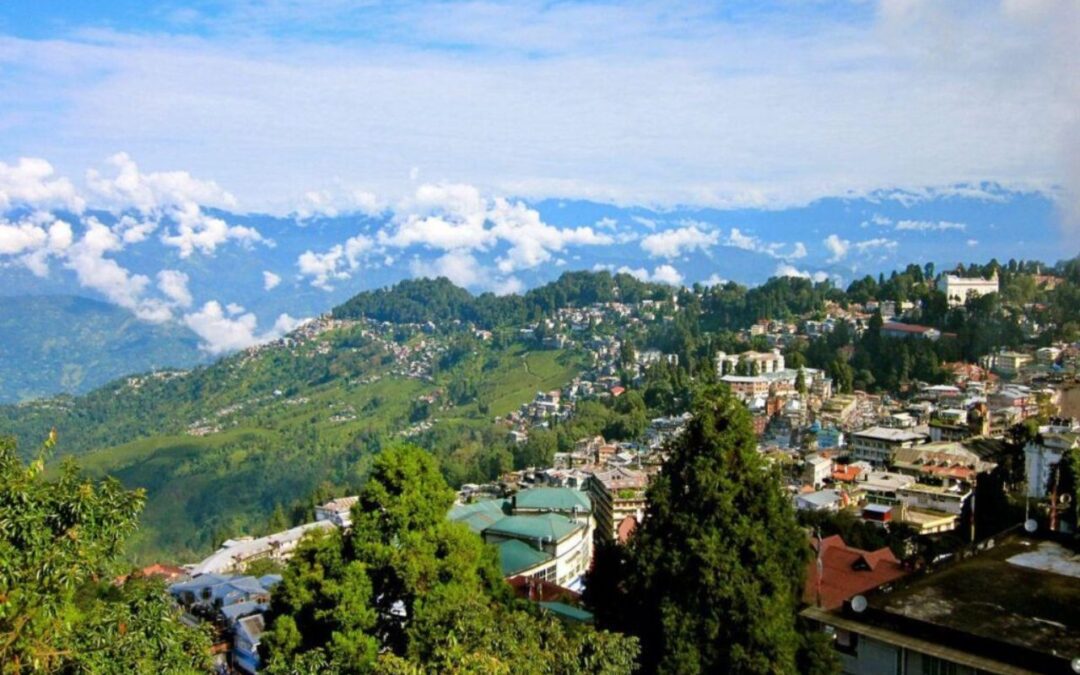Synopsis– This document aims to identify India’s top 10 cities with the best air quality in 2025 and to evaluate how improved air quality is simultaneously changing real estate, tourism, and urban development. It looks at the drivers of improved air quality, policy initiatives, and future expectations for urban health and sustainability.
Introduction
As pollution increases in India, a new story is emerging – not in megacities but in the clean skies of smaller towns. Many tier-2 and tier-3 cities, mostly in the South and Northeast, led the national Air Quality Index (AQI) in 2025, ahead of even the most polluted urban monsters. Their success represents something greater than an improvement in the environment; it represents a shift in the real estate, tourism, and urban design industries in how clean air is changing the equation of city living. This article will discuss India’s ten clean-air cities, and the life-altering implications of breathable air.
Top 10 Cleanest-Air Cities in India (2025)
| Rank | City | State | AQI (2025 Avg.) | Main Pollutant(s) |
|---|---|---|---|---|
| 1 | Tirunelveli | Tamil Nadu | 33 | PM10 |
| 2 | Naharlagun | Arunachal Pradesh | 43 | PM10 |
| 3 | Madikeri | Karnataka | 44 | PM2.5 |
| 4 | Vijayapura | Karnataka | 47 | PM10 |
| 5 | Thanjavur | Tamil Nadu | 47 | PM10 |
| 6 | Koppal | Karnataka | 55 | PM2.5 |
| 7 | Varanasi | Uttar Pradesh | 55 | PM2.5, PM10 |
| 8 | Hubballi | Karnataka | 56 | PM2.5, CO |
| 9 | Kannur | Kerala | 56 | PM10 |
| 10 | Chhal | Chhattisgarh | 56 | PM10 |
Drivers Behind Their Clean Air
- Geography: Cities such as Madikeri, Aizawl, and Kannur are located in hilly areas and along coasts. They are surrounded by a dense green cover and are favoured by winds and rain to disperse pollutants.
- Less Urban Pressure: Compared to a metro city, these areas have fewer people, fewer polluting manufacturing, less roads and thus less cars.
- Community Support: Citizens actively assist in afforestation drives and local clean-air campaigns.
- Policy: Municipal authorities can enforce air quality standards based on the accommodation rather than the excessive size of their urban geographies.
- Climate: Rain and wind often follow climatic patterns every year, most commonly in the Western Ghat states and Delhi.
Clean Air and Its Impact on Real Estate
- Market Shift to Clean-Air Cities: We are seeing a rental housing increase in areas such as Tirunelveli and Madikeri as more buyers are valuing clean air and health over urban convenience.
- Evolving Buyer Profile: There is now greater interest in additional housing from remote workers, retirees, and families prioritising their health for the long term, santé in less polluted cities.
- Clean air has become a real estate value addition: Builders are increasingly using “clean-air homes” in their marketing practices. Home features promote air purifiers, green terraces, and indoor-outdoor living. The Air Quality Index, previously a niche feature, is now a marketing tool and is used as a selling point.
- Government assistance and local policies: Clean-Air cities represent local government activities, including the National Clean Air Programme (NCAP) and afforestation, fresh dust control, and emissions checks, providing cleaner Tier-2 and Tier-3 cities and making them more livable.
- Livability and Health Benefits: Clean-air cities are creating fewer respiratory ailments and health costs, but are also building a resilient real estate market for the future.
Also read: Top 10 Well-Planned Cities in India 2025 – See Which City Tops the List
Boost to Tourism and Urban Branding
Places like Madikeri, Gangtok and Aizawl are becoming wellness destinations (where visitors can get clean air and escape polluted cities). More tourists are staying longer because of the salubrious environments and outdoor experiences available also at these destinations. States like Tamil Nadu and Mizoram are publishing clean air tourism campaigns that pride themselves on heritage and nature. With cleaner air, monuments and natural features deteriorate less quickly. Eco-lodges, homestays, and local businesses are seeing more and more foot traffic and repeat foot traffic sustainably.
Government Policies and Local Initiatives
- National Clean Air Programme (NCAP): NCAP launched in 2019, focusing on 131 cities with a target to reduce levels of PM in air by 20 to 30% by 2026 through improved health emissions, public transport, dust control and management.
- State Level Initiatives: Tamil Nadu has focused on afforestation and dust prevention. Karnataka has focused on vehicle fitness for emissions and vegetation in cities. The northeastern states have made strides with the preservation of forests and biomass management.
- Technology for Transparency: Tools like the PRANA portal and SAFAR. Tracking air quality and forecasting in real-time.
- Citizen Engagement: Providing ‘clean city’ awards. Campaigns in schools. Community engagement drives – championing citizen pride.
- Collectively, these efforts enable Tier-2 cities to surpass improvements made by older metros in achieving improved AQI.
Challenges and the Road Ahead
- Implementation Gaps: While policies like NCAP exist, on-the-ground implementation is variable across cities.
- Urbanization Pressure: Increased population density, construction, and vehicle density threaten recent air quality improvements.
- Climate Uncertainty: Changes in rainfall and temperature may also alter dispersion and the accuracy of pollutant monitoring.
- Path Forward: There needs to be more local implementation and enforcement, real-time and decentralised monitoring, and climate-resilient urban planning.
- Vision for 2030: If there are sustained efforts with accountability, by 2030 India could achieve 25 cities or more in the “Good AQI” category, so that clean air could become a usual, common expectation rather than the exception.
Conclusion
Clean air is transforming India’s urban future, promoting healthy, wealthy, livable cities. Each clean air leader not only represents blue skies, but they also represent a sustainable, progressive development model. These cities are taking advantage of better urban air quality, rising awareness, and improving policies to establish a new standard for the future of cities. In addition to proof of economic growth while providing a clean environment, this is paving the way for a greener, more aspirational India.
Written by N G Sai Rohith





